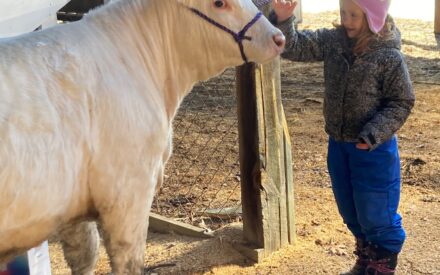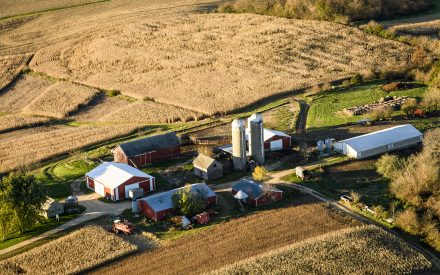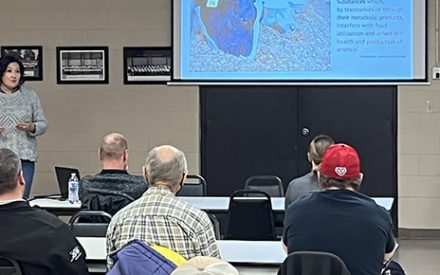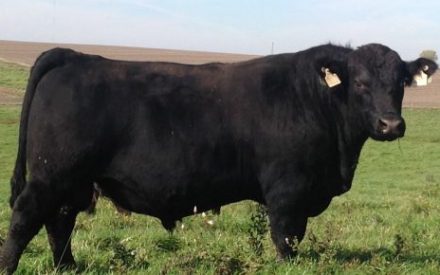Situation
Although Wisconsin is nicknamed “America’s Dairyland”, the state has a growing beef industry. Wisconsin farms produce beef through three main sources: cow-calf operations, feedlot operations and bull calves from dairy farms being raised for beef production.
In 2017 there were 285,000 beef cows on 13,954 beef cow-calf operations within Wisconsin[1] – an increase of approximately 38,000 cows in the last 5 years. These cows produce approximately 260,000 feeder calves that are raised for human consumption annually. Additionally, Wisconsin has 3,080 feedlot operations where 289,000 cattle are fed to finish[2]. Lastly, Wisconsin’s dairy cows produce approximately 600,000 bull calves each year that are grown for beef production.
The United States population tops over 300 million individuals, while USDA reports the number of farms within the U.S. is just over 2 million,[3]. This means that less than 2 percent of the U.S. population produces livestock products for the remaining population. While the vast majority of American consumers are not farmers themselves and know very little about livestock production, they are increasingly concerned about food safety and animal welfare. Due to this trend, Wisconsin beef producers are seeking ways to assure consumers that they are committed to producing high quality, wholesome and safe beef products.
“Consumer perception has changed a lot.”
-Workshop Participant
Beef Quality Assurance (BQA) – a nationally coordinated, state implemented program – was created in 1987 to help beef producers implement best management practices and new technologies. This helps to continuously improve beef quality, safety and animal welfare; thereby ensuring consumers’ confidence. Additionally, National Beef Quality Audits of federally inspected beef harvesting facilities that began in 1994 led to improvements in the quality of beef raised in the U.S. These audits have been one of the main drivers in improvements of herd management techniques, genetic selection, animal welfare and handling, and injection-site lesions prior to the implementation of Beef Quality Assurance certification[4].
Since 2019, several beef packers are requiring cattle producers to complete BQA certification to help assure consumers that the beef they eat is safe to eat and raised with animal welfare at the forefront. Without BQA certification, cattle producers cannot sell their animals to those beef packers.
Response
UW-Madison Division of Extension agriculture educators plan and conduct workshops where producers can learn new information about best management practices, validate their current management practices, and identify areas for areas for improvement. The workshops also certify producers in Beef Quality Assurance (BQA), allowing them to maintain access to current beef markets.
From Fall 2018 through the end of 2019, Extension educators conducted over 50 workshops, reaching more than 1,800 producers. Workshop topics included animal care and husbandry, animal welfare, and food safety.
Workshop participants included those producers who market their beef though conventional marketing channels (79 percent), with another 21 percent reporting they may also direct market their beef to consumers. Eighty-three percent of the participants reported they had not previously been certified in Beef Quality Assurance. A small percentage reported they raised their cattle organically or for other specialty markets.
Results
As a result of attending these Extension education workshops, producers increased their knowledge and understanding of proper management techniques for the cattle they raise and the value consumers place on how beef is produced.
The greatest increases in understanding were for the topics Using the Beef Check-Off[5] and Consumer Perception of Beef Production (1.16 and 0.90 point increase using a 5 point scale, respectively). In the topic of consumer perception, producers learned about the misconceptions consumers currently have about beef production, and the value consumers place on safe and humane production practices.
Across all workshops, participants listed over 100 management practice(s) they expected to add or change as a result of attending the workshop. The most commonly reported intended change was to keep better records, including those related to medications, vaccines and feedstuffs. Several participants also indicated they intended to use better vaccination techniques and improve their cattle handling practices.
[1]United States Department of Agriculture – National Agricultural Statistics Service. Jan. 2017. Cattle Inventory. Web. Accessed 11.11.2019. https://www.nass.usda.gov/Statistics_by_State/Texas/Publications/Current_News_Release/2017_Rls/spr_cattle_inv_2017.pdf
[2] United States Department of Agriculture – National Agricultural Statistics Service. Sept. 2018. 2018 Wisconsin Agricultural Statistics. Web. Accessed on 11.5.2019. https://www.nass.usda.gov/Statistics_by_State/Wisconsin/Publications/Annual_Statistical_Bulletin/2018AgStats-WI.pdf.
[3] United States Department of Agriculture – Economic Research Service. Sept. 2018. The number of farms has leveled off at about 20.5 million. Web. Accessed on 11.5.2019. https://www.ers.usda.gov/data-products/chart-gallery/gallery/chart-detail/?chartId=58268
[4] National Cattlemen’s Beef Association. 2017. National Beef Quality Audit – Market Cow and Bull. Web. Accessed on 11.11.2019. https://www.bqa.org/Media/BQA/Docs/nbqa-exec-summary_cowbull_final.pdf
[5] The beef check-off program is a national producer funded research and promotional program used to maintain and build beef consumption.

 Livestock Biosecurity to Prevent Disease
Livestock Biosecurity to Prevent Disease Planning to Ensure a Viable Business
Planning to Ensure a Viable Business Economic Viability for Beef Producers
Economic Viability for Beef Producers Sustainability & Profitability of Beef Production
Sustainability & Profitability of Beef Production


